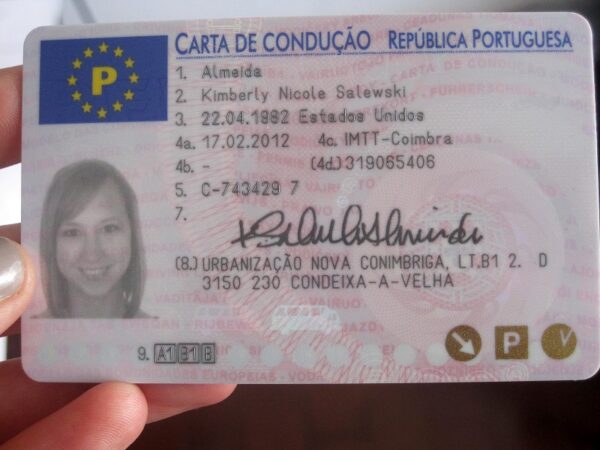Steps to Obtain a Driving License: A Comprehensive Guide
Acquiring a driving license is a substantial milestone for many individuals, marking the transition into increased independence and duty. The process might differ from one region to another, however the essential steps remain mostly consistent. Venda De Carta De Condução describes the vital steps required to get a driving license, frequently accompanied by different requirements and documentation.
Tabulation
- Comprehending the Types of Licenses
- Eligibility Requirements
- The Process of Obtaining a Driving License
- Getting ready for the Road Test
- Often Asked Questions (FAQs)
1. Comprehending the Types of Licenses
Before starting the journey to acquire a driving license, it is important to comprehend the different kinds of licenses available. Common categories consist of:
| License Type | Description |
|---|---|
| Student's Permit | Enables newbie chauffeurs to practice driving under supervision. |
| Class C License | Requirement license for running non-commercial passenger lorries. |
| Class B License | Needed for operating larger lorries, such as buses or vans. |
| Class A License | For running heavy trucks and cars with trailers. |
2. Eligibility Requirements
Each jurisdiction might have particular eligibility criteria, but typically, these are the typical requirements for getting a driving license:
- Age: Most areas need candidates to be at least 16 years of ages for a student's permit and 18 years old for a full driving license.
- Recognition: Valid recognition such as a passport or birth certificate is typically required to prove identity.
- Residency: Applicants must usually demonstrate residency within the jurisdiction where they are applying.
- Health Requirements: Some locations may require a health examination or vision test to guarantee the candidate satisfies physical standards.
3. The Process of Obtaining a Driving License
The process to get a driving license can be broken down into a number of key steps:
Step 1: Obtain a Learner's Permit
- Research study the Driver's Handbook: Each state offers a driver's handbook that lays out traffic laws and safe driving practices.
- Written Test: Pass the composed knowledge test based on the info in the handbook.
- Vision Test: Complete a vision examination to guarantee you meet the minimum visual standards.
- Pay Fees: Pay the required charges for the student's authorization.
Step 2: Complete Driver's Education (if needed)
Many regions mandate a driver's education course, particularly for younger candidates. This course usually includes:
- Classroom direction on traffic laws and safe driving practices.
- In-car training sessions with a certified trainer.
Step 3: Practice Driving
After obtaining a learner's permit, the next step is to practice driving under different conditions. Secret points include:
- Log Practice Hours: Many jurisdictions need a minimum variety of monitored driving hours. Keep a log to track your practice.
- Experience Diverse Conditions: Practice driving in diverse conditions, such as in the evening or in severe weather condition.
Step 4: Schedule the Road Test
Once the required practice hours are finished, the candidate can schedule a road test. Steps often consist of:
- Book the Appointment: Schedule the roadway test through the local Department of Motor Vehicles (DMV) or relevant authority.
- Prepare Documents: Have needed documents ready, including the learner's license, log of driving hours, and evidence of identity.
- Choose a Vehicle: Use a safe and legal lorry for the road test that you are confident driving.
Step 5: Pass the Road Test
During the roadway test, you'll be examined on your capability to operate a vehicle securely according to traffic laws. Key elements assessed include:
- Making safe turns and lane modifications.
- Appropriate usage of signals.
- Obeying speed limitations and traffic indications.
Action 6: Obtain Your Full Driving License
Upon passing the road test:
- Pay Fees: Settle any remaining fees connected with getting the complete license.
- Take a Photo: Most jurisdictions require an image for the main driving license.
- Receive Your License: Your complete driving license will either be issued on-site or sent by mail to you.
4. Getting ready for the Road Test
Preparation is critical for success on the road test. Here are some pointers for potential motorists:
- Practice Regularly: Regular practice helps to develop confidence and establish driving abilities.
- Familiarize Yourself with the Test Route: If possible, drive the test route ahead of time to comprehend any difficulties you might face.
- Evaluation Common Maneuvers: Be comfortable with parking, merging, and obeying traffic signals.
- Stay Calm: Remember to breathe, remain calm, and focus on your efficiency during the test.
5. Often Asked Questions (FAQs)
1. The length of time does it require to get a driving license?
The time differs by jurisdiction, however it normally takes a couple of weeks to a couple of months, depending upon how rapidly the applicant finishes the necessary steps and practices.
2. What should I bring to the road test?
Bring your student's authorization, evidence of identity, any required documents, and a car for the test.
3. Can I take the road test in my own cars and truck?
Yes, you can take the roadway test in your vehicle as long as it fulfills safety requirements and is lawfully signed up.
4. What happens if I stop working the roadway test?
If you fail, you can normally retake the test after a waiting period. Make sure to practice the areas where you had a hard time before the next attempt.
5. Are there extra requirements for international motorists?
Yes, international chauffeurs may need to supply additional documentation, like an International Driving Permit (IDP).
In conclusion, acquiring a driving license needs commitment, practice, and adherence to legal requirements. By following these outlined steps and preparing effectively, individuals can effectively navigate the process and attain their goal of becoming certified motorists. please click the following article may seem daunting, but the independence and mobility that a driving license offers are well worth the effort.

